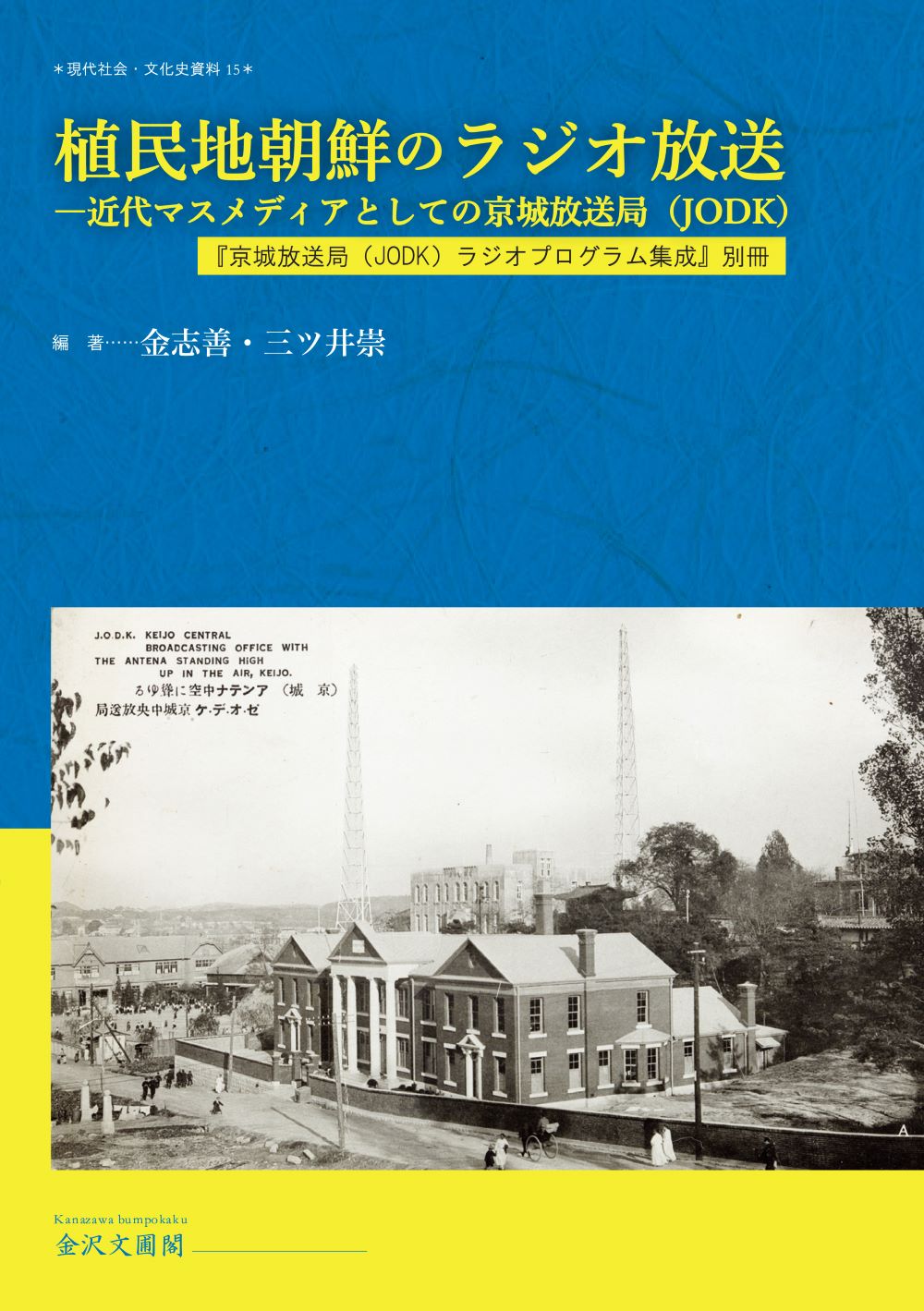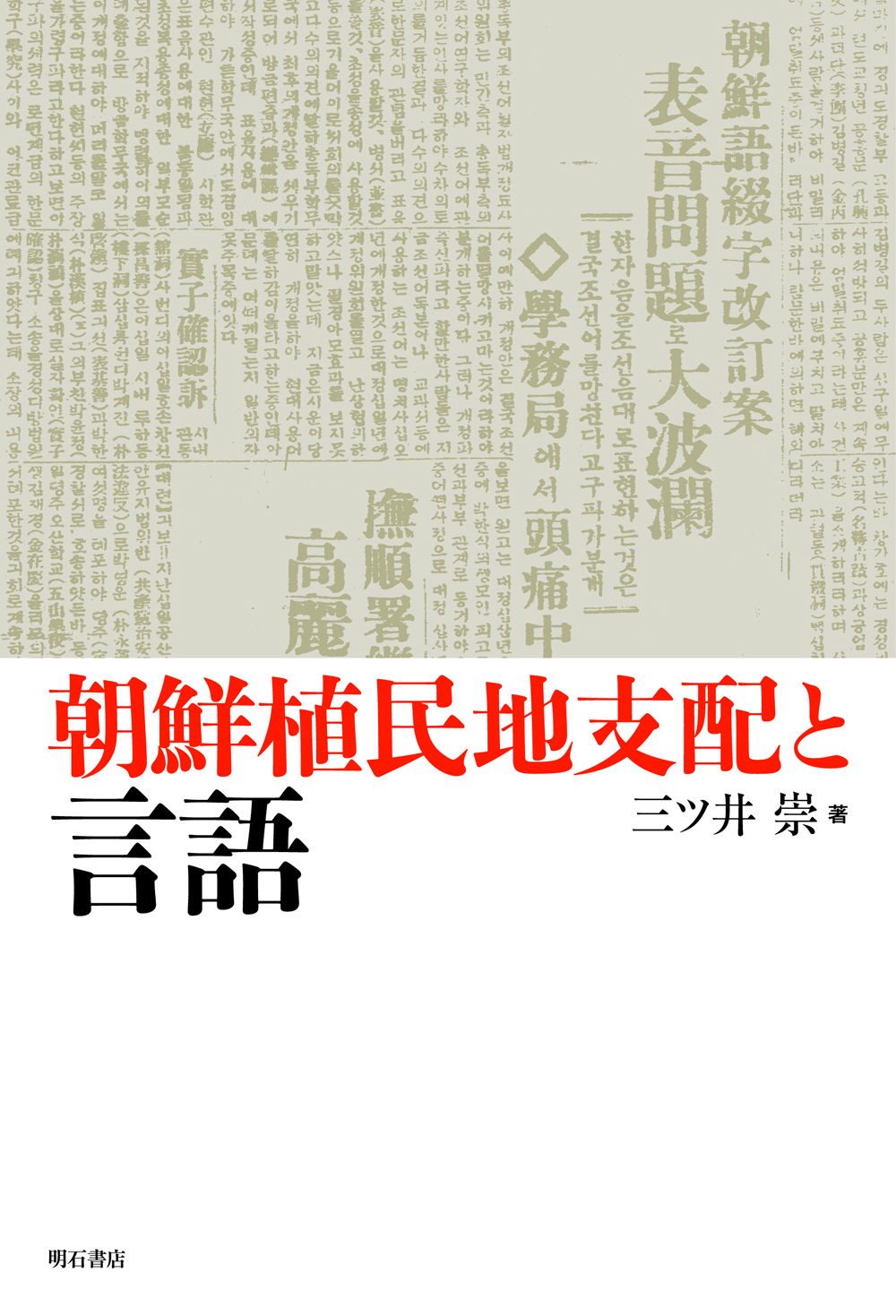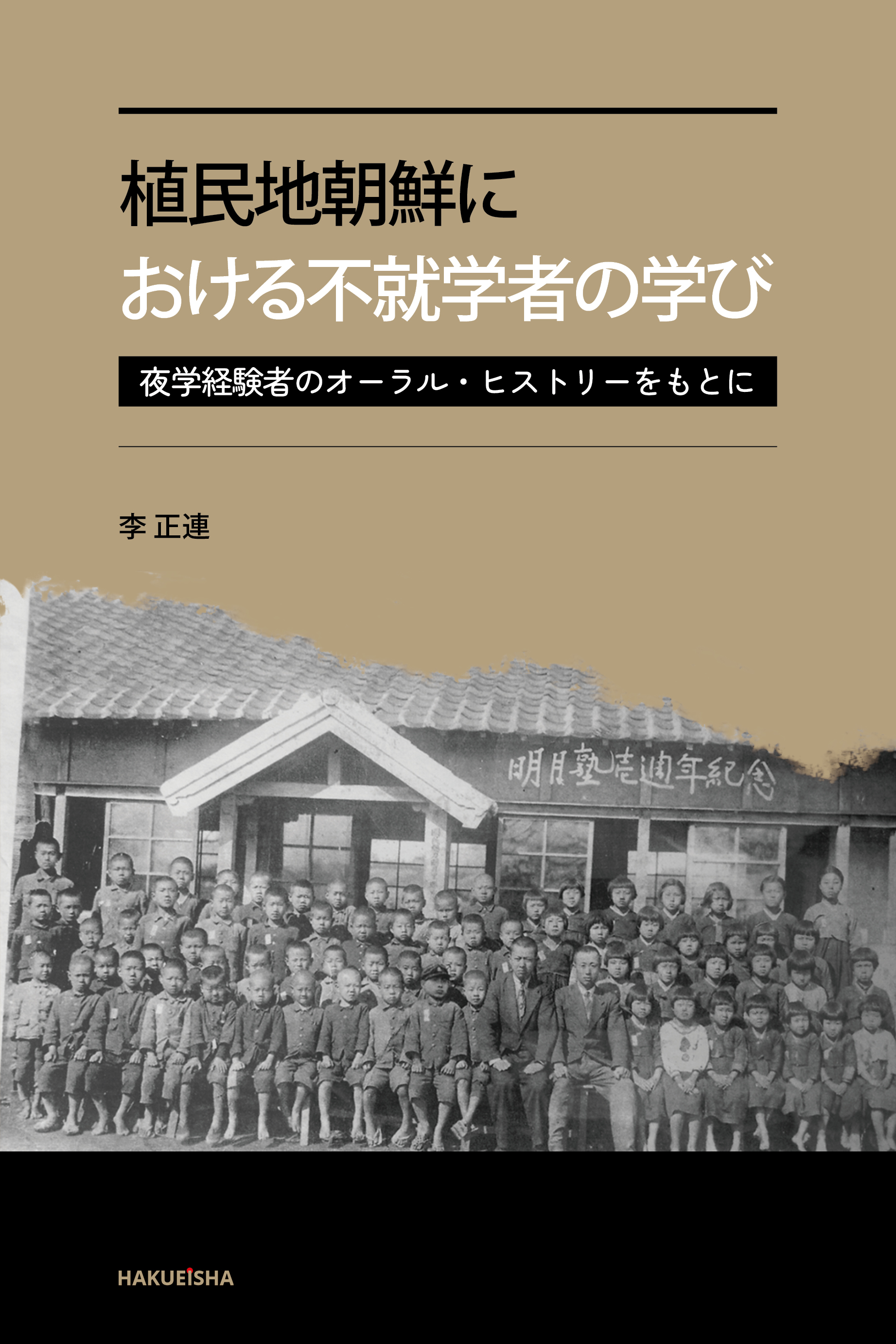
Title
A Collection of Radio Programs from the Keijo Broadcasting Station (JODK), separate volume Shokuminchi Chosen no Radio Hoso (Radio Broadcasting in Colonial Korea - Keijo Broadcasting Station (JODK) as Modern Mass Media)
Size
291 pages, A5 format, softcover
Language
Japanese
Released
2023
ISBN
9784910998121
Published by
Kanazawa Bunpokaku
Book Info
Japanese Page
This book is a separate volume (researched monograph) of A Collection of Radio Programs, from the Keijō Broadcasting Station (JODK), which focuses on the radio broadcasting of the Keijō Broadcasting Station (JODK) in colonial Korea from the perspectives of history, sociology, literature, linguistics, musicology, and anthropology. It presents various arguments on the functions and characteristics of radio broadcasting under colonial rule from the perspectives of history, sociology, literature, linguistics, music, and anthropology.
The compilation is based on the radio programming column in Keijō Nippo, the largest and most representative Japanese-language newspaper of the Korean Governor General office (Sōtoku-fu) in Seoul. The Keijō Broadcasting Station was established in Tokyo, Japan, on February 16, 1927 as the the fourth broadcasting station to be licensed after Tokyo (JOAK), Osaka (JOBK), and Nagoya (JOCK). It was established four years earlier than the Taiwan Broadcasting Association, also located in a Japanese colony. In colonial Korea, modern consumer culture was formed in the 1920s, and modern popular culture spread through radio media. However, this popular culture was transformed during the war. There are those who view the radio broadcasting media in colonial Korea from a negative perspective as “a means of colonial rule” and “a propaganda tool” (for rule and war). It should not be overlooked that despite Japanese colonial rule, radio was a medium that brought joy to the people of the time in terms of culture, entertainment, and education, penetrated deeply into their lives, and gave birth to a new culture.
Although the Keijō Broadcasting Station was under the jurisdiction of the Communication Bureau of the Korean Governor General, it started as an incorporated association (later changing its name to the Korean Broadcasting Association in 1932), and most of its financial operations were financed by subscriber fees, so it had to reflect the cultural, entertainment, and educational needs of its listeners in order to secure financial resources. The situation was such that it was necessary to reflect on the cultural, entertainment, and educational needs of listeners to secure financial resources. In 1933, a second broadcasting service in Korea was established, separate from the existing service, to organize broadcasts tailored to the taste of Koreans.
Some have pointed out that the second broadcast was a “compromise” between the colonizers and the colonized. Until the Sino-Japanese War, the Korean Governor General did not strictly censor or control “comfort” broadcasts but allowed a certain degree of freedom in broadcasting. Based on these studies, this book examines how Japanese colonial rule of Korea was involved in the system and operation of radio broadcasting, the content of the broadcasts how they changed the culture of the time, how they defined the composition of the relationship between the Japanese and Koreans in Korea, wartime period radio, and the role played by broadcasting during the wartime period. These and other aspects of modern mass media are comprehensively presented by nine expert authors from various perspectives.
In this way, the book clarifies one aspect of the cultural formation of modern mass media (history of radio culture and media history), namely, what role the radio broadcasting media played as a mass medium for Koreans and Japanese living in Korea, which was considered an “outer” region of Japan.
(Written by KIM Jiesun, Project Associate Professor, Graduate School of Arts and Sciences / 2025)



 Find a book
Find a book



